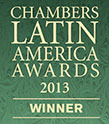On May 25, 2023, the Supreme Court of the United States issued its decision in Sackett v. EPA, No. 21-454, slip op (U.S. May 25, 2023), significantly narrowing the scope of protected wetlands under the Clean Water Act (the “CWA”). In Sackett, the Court delves into the CWA’s jurisdictional standard for identifying adjacent wetlands as “waters of the United States” (“WOTUS”) in the context of a challenge to a U.S. Environmental Protection Agency (“EPA”) administrative compliance order for the unauthorized discharge of a pollutant into WOTUS.
In 2004, Michael and Chantall Sackett, purchased a vacant lot in a residential area near Priest Lake, Idaho, and began backfilling the lot with dirt to prepare for building a home. The EPA notified the Sacketts that their lot contained wetlands that qualify as “navigable waters” and that their backfilling violated the CWA, which prohibits discharging pollutants into the WOTUS. Even though the Sackett’s property did not have a surface connection to any traditional navigable waters, the EPA reasoned that the wetlands on the Sackett’s lot were WOTUS because they were adjacent to a ditch that fed into creek, that in turn fed into Priest Lake, a navigable intrastate lake. The EPA claimed that a “significant nexus” existed between the Sackett’s property and WOTUS because the wetlands on their property, when combined with an adjacent “similarly situated” wetland complex, significantly affect the chemical, physical, and biological integrity of Priest Lake. The Sacketts sued, alleging their property was not WOTUS.
The Supreme Court held the wetlands on the Sackett’s property were not WOTUS, reasoning that the CWA extends only those wetlands with a "continuous surface connection" to "traditional interstate navigable waters". The Court rejected the “significant nexus” standard used by the EPA, previously advanced by Justice Kennedy in Rapanos v. United States, 547 U.S. 715 (2006), and established a more stringent test to determine when the CWA applies to an adjacent wetland. Under the Sackett standard, “to assert jurisdiction over an adjacent wetland, a party must establish first, that the adjacent body of water constitutes ‘waters of the United States’ (i.e., a relatively permanent body of water connected to traditional interstate navigable waters); and second, that the wetland has a continuous surface connection with that water, making it difficult to determine where the ‘water’ ends and the ‘wetland’ begins.” Under the Sackett test, “[w]etlands that are separate from traditional navigable waters cannot be considered part of those waters, even if they are located nearby.”
Sackett represents the latest in a series of legal disputes regarding the interpretation of WOTUS. On December 30th, 2022, the EPA and the U.S. Army Corps of Engineers (collectively, the “Agencies”) promulgated the "Revised Definition of 'Waters of the United States'" rule (the “Rule”). The Rule employs the “significant nexus” standard to identify which wetlands the Agencies interpret to fall under the CWA’s jurisdiction. Although the Court did not address the validity of the Rule in Sackett, the Court’s holding rejects the use of the “significant nexus” standard on which the Agencies’ interpretation of WOTUS is based. Given the foregoing, it is unclear how the Agencies will implement their regulatory agenda in the wake of the Sackett decision, but it could have various implications. For example, the Court's decision may impact individual permits and wetlands mitigation measures that have not yet been implemented for wetlands that would no longer be considered jurisdictional. In addition, while Sackett focused on wetlands, the principles of a continuous surface connection and the presence of relatively permanent waterbodies are relevant to other areas, including ephemeral and intermittent waters, as well as man-made structures like ditches and canals.
The content of this McV Alert has been prepared for information purposes only. It is not intended as, and does not constitute, either legal advice or solicitation of any prospective client. An attorney-client relationship with McConnell Valdés LLC cannot be formed by reading or responding to this McV Alert. Such a relationship may be formed only by express agreement with McConnell Valdés LLC.







